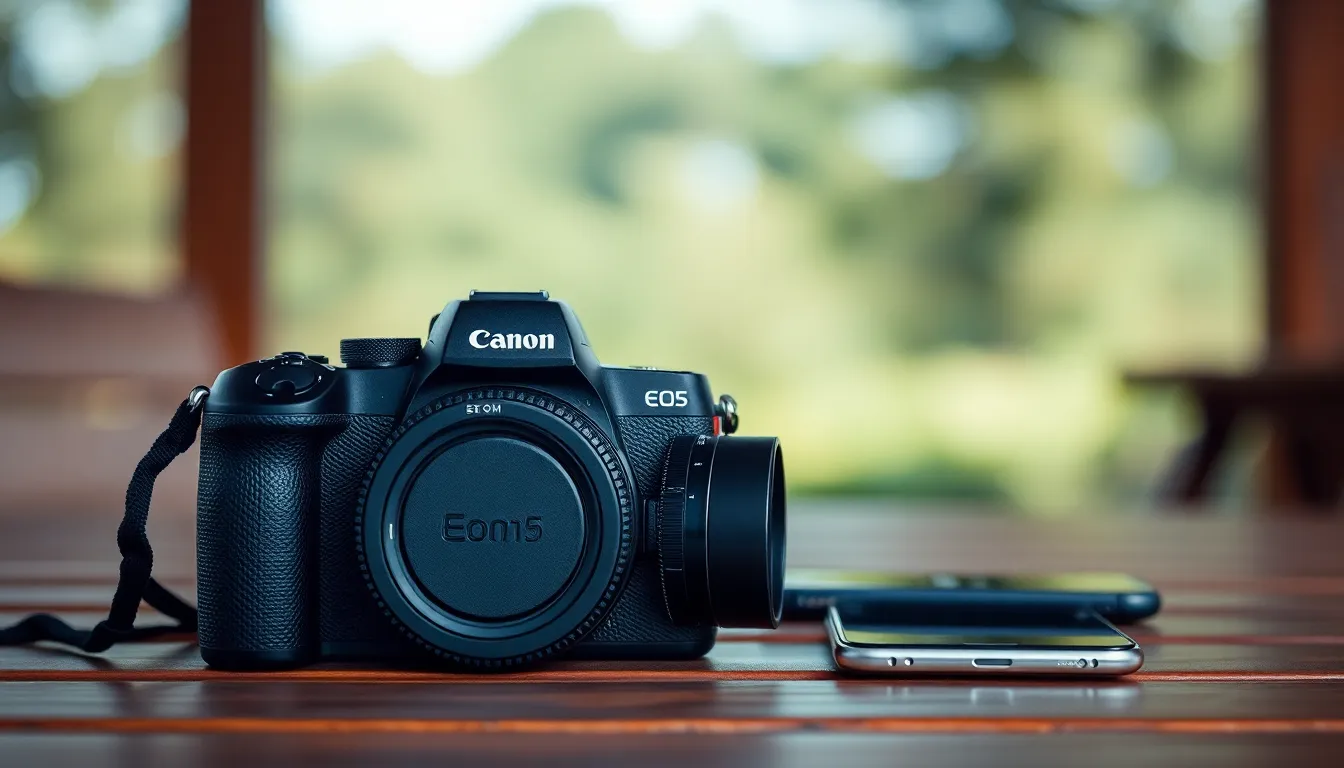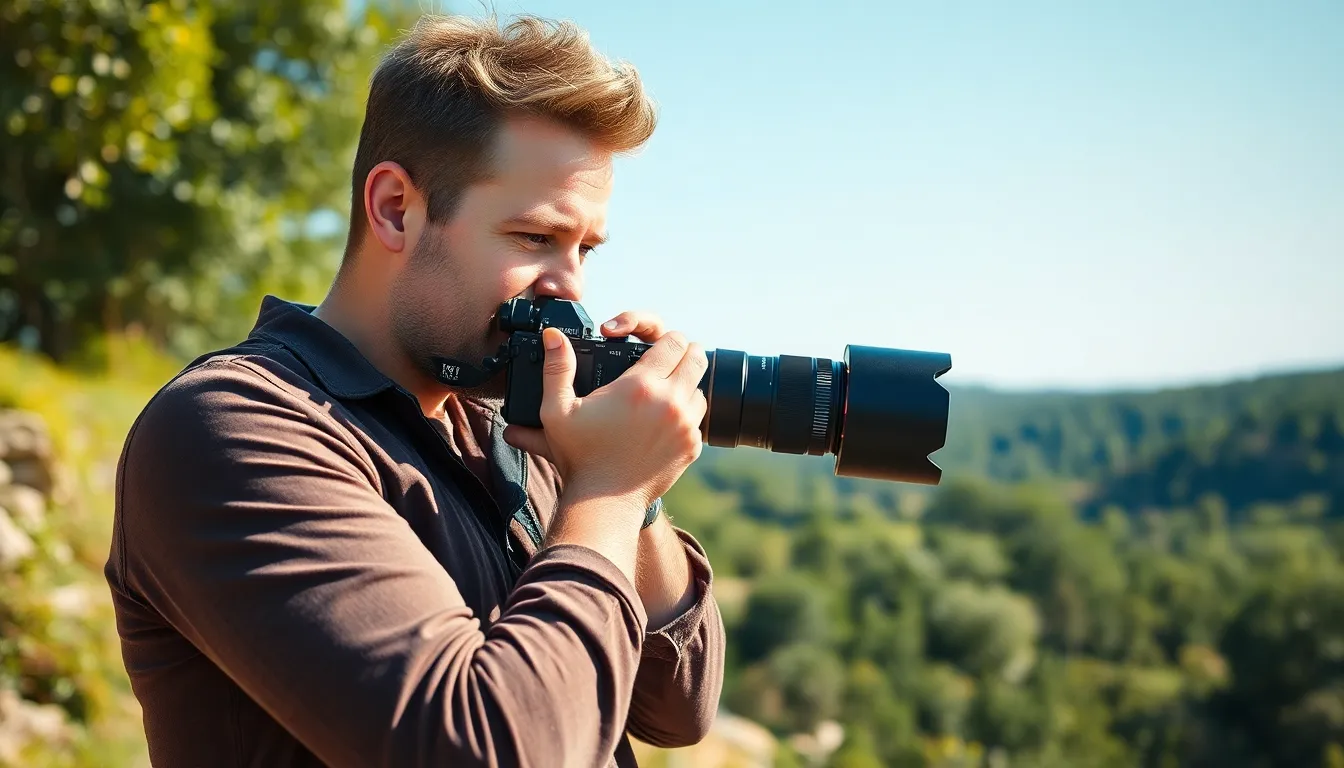In a world where smartphones reign supreme, the iPhone has long been hailed as the king of mobile photography. But what if there’s a challenger lurking in the shadows? While the iPhone captures stunning shots, it’s time to explore the contenders that might just steal its crown.
Table of Contents
ToggleTop Contenders for Camera Excellence
Several cameras outperform the iPhone in specific areas of photography. The Canon EOS R5 excels with its 45-megapixel sensor, catering to professionals seeking high-resolution images. Many photographers appreciate its dual pixel autofocus and impressive burst shooting capability of up to 20 frames per second.
Another strong contender is the Sony A7R IV, featuring a 61-megapixel sensor that significantly boosts detail in landscapes and portraits. Users highlight its great dynamic range, which allows for impressive performance in various lighting conditions.
Fujifilm’s X-T4 also stands out with its unique color science and film simulation modes, appealing to those who value artistic expression. Its in-body stabilization ensures smooth video and sharp stills, a feature that many creators find indispensable.
Nikon’s Z7 II further rounds out the competition. It contains a 45.7-megapixel sensor, offering excellent low-light performance thanks to its back-illuminated design. Photographers often praise its ergonomics and intuitive interface, providing a pleasant shooting experience.
Smartphone users might find themselves intrigued by Google Pixel 7 Pro. While technically a phone, its advanced computational photography features produce impressive results that rival dedicated cameras in various scenarios. Many appreciate its hardware and software synergy, particularly in low-light conditions.
Each of these cameras provides specific features that enhance image quality, focusing on professional needs and creative endeavors. Users exploring options beyond the iPhone will recognize the advancements and capabilities present in these models.
Comparing Camera Specs

Evaluating camera specs reveals significant differences between the iPhone and dedicated cameras. These differences impact image quality and versatility.
Megapixels and Sensor Size
Megapixels play a crucial role in image resolution, with dedicated cameras often featuring higher counts than the iPhone. The Canon EOS R5 boasts a 45-megapixel sensor, providing sharp details that outshine the iPhone’s capabilities. Similarly, the Sony A7R IV features an impressive 61-megapixel sensor, enabling expansive cropping without sacrificing quality. Larger sensors, like those in these cameras, enhance light-gathering ability and overall image fidelity. Smartphones typically have smaller sensors due to space constraints, which affects their performance in demanding photographic situations. Fujifilm’s X-T4 and Nikon’s Z7 II also leverage larger sensors, delivering high-quality images that align with professional standards.
Aperture and Low-Light Performance
Aperture is vital for controlling light intake, influencing performance in low-light conditions. The Canon EOS R5 includes a wide aperture range, facilitating beautiful bokeh and superior low-light capture. Acclaimed for its low-light capabilities, Nikon’s Z7 II excels with an f/2.8 aperture, allowing more light to reach the sensor. In contrast, the iPhone’s aperture limits its effectiveness in dim environments. The Sony A7R IV also takes advantage of wide apertures, delivering stunning images where natural light is scarce. These dedicated cameras significantly enhance low-light performance, making them preferred choices for professional photographers who frequently work in challenging lighting conditions.
Popular Alternatives to iPhone Cameras
Many alternatives to the iPhone offer exceptional photography capabilities across different categories.
DSLR Cameras
DSLR cameras remain popular among photographers for their versatility. Canon’s EOS 5D Mark IV features a 30.4-megapixel sensor, providing excellent detail and clarity. Nikon’s D850, with its 45.7-megapixel count, boasts exceptional dynamic range and low-light performance. A wide variety of lenses enhances creative options while adjustable settings allow photographers to capture images suited to their unique style. These cameras excel in professional settings, boasting features and controls that aren’t available on smartphones.
Mirrorless Cameras
Mirrorsless cameras have gained traction for their compact design and advanced technology. Sony’s Alpha a7 III has a 24.2-megapixel sensor backed by impressive autofocus performance. Fujifilm’s X-T4 offers stunning color rendition with its 26.1-megapixel sensor, making it a favorite for creative professionals. In addition, advanced video capabilities position many mirrorless options as suitable choices for videography. Lightweight designs ensure portability, offering advantages for travel and spontaneous shooting.
Compact Cameras
Compact cameras provide a balance between portability and quality, ideal for casual photographers. The Sony RX100 VII packs a 20.1-megapixel sensor into a pocket-sized body, making it perfect for on-the-go shooting. Canon’s G7 X Mark III features a fast lens that excels in low-light conditions, enhancing versatility. Simple controls ensure ease of use while retaining image quality that competes with smartphones. These compact options cater to those seeking convenience without sacrificing photography performance.
Real-World Performance
Dedicated cameras consistently outperform iPhones in real-world scenarios, showcasing superior features and capabilities.
Image Quality Comparison
Dedicated cameras like the Canon EOS R5 and Sony A7R IV provide superior image quality due to their larger sensors and higher megapixel counts. These factors significantly enhance detail and dynamic range compared to the iPhone. For instance, the Canon EOS R5 boasts a 45-megapixel sensor, enabling clearer images in various lighting conditions. In contrast, the iPhone, while impressive, lacks the same level of detail, particularly in difficult lighting. Furthermore, the wider apertures found in many dedicated models improve low-light performance, allowing users to capture striking images effortlessly. Overall, the difference in image quality becomes evident, particularly when comparing images side by side.
Video Capabilities
When assessing video capabilities, dedicated cameras also lead the way. The Fujifilm X-T4 offers impressive 4K video recording with advanced stabilization features, ideal for smooth footage. Comparatively, the iPhone excels in convenience but lacks the comprehensive options found in dedicated devices. The Sony A7R IV supports 10-bit 4:2:2 video output, catering to professional videographers looking for flexibility in post-production. Additionally, these cameras provide various frame rates, resolution options, and manual control, enhancing the creative process. While the iPhone might serve casual users well, dedicated cameras deliver the versatility and quality serious filmmakers require.
While the iPhone excels in mobile photography with its ease of use and impressive image quality it faces stiff competition from dedicated cameras. Models like the Canon EOS R5 and Sony A7R IV offer features that cater to professional needs and creative pursuits. Their larger sensors and advanced capabilities provide a significant advantage in image fidelity and versatility.
For those seeking superior performance in various conditions dedicated cameras stand out as worthy alternatives. Whether it’s the low-light prowess of the Nikon Z7 II or the unique color science of the Fujifilm X-T4 these options elevate photography beyond the limitations of a smartphone. Ultimately the choice depends on individual preferences and the level of commitment to photography.




